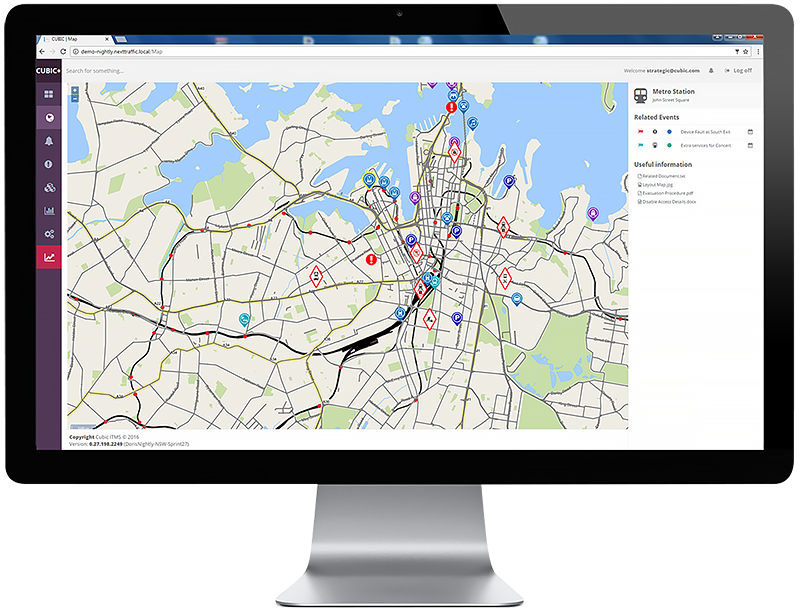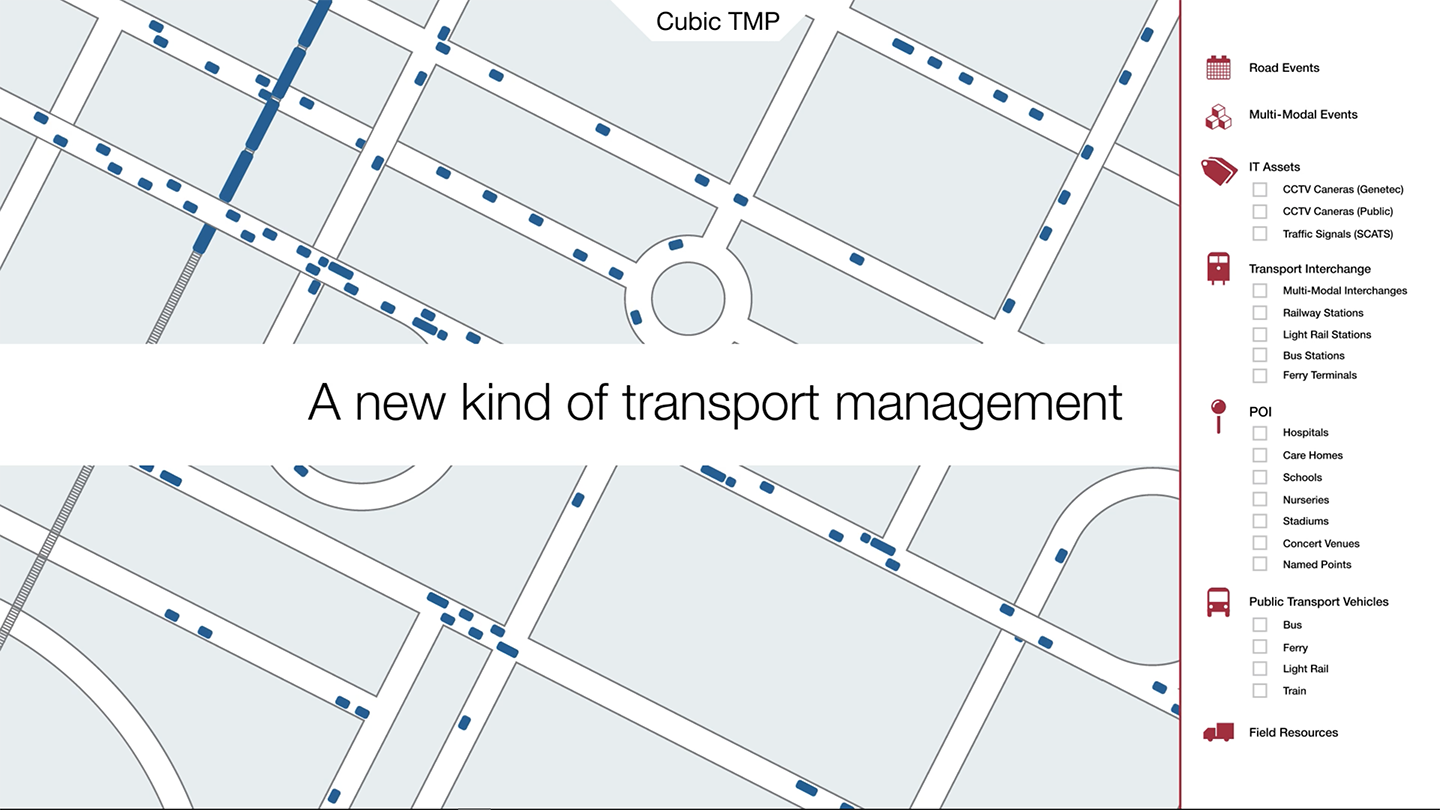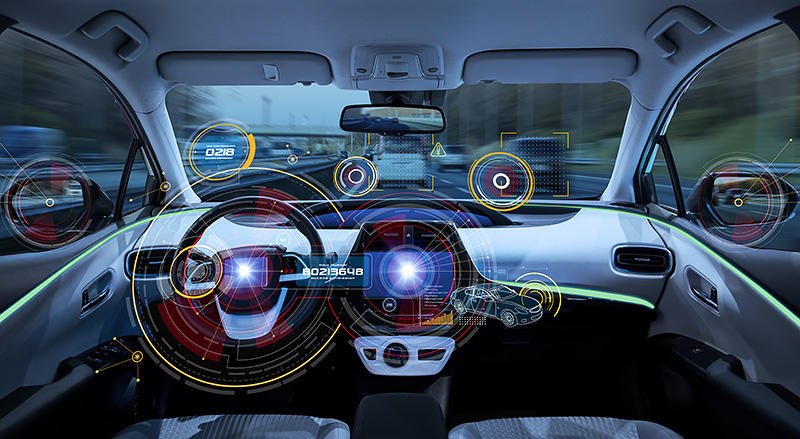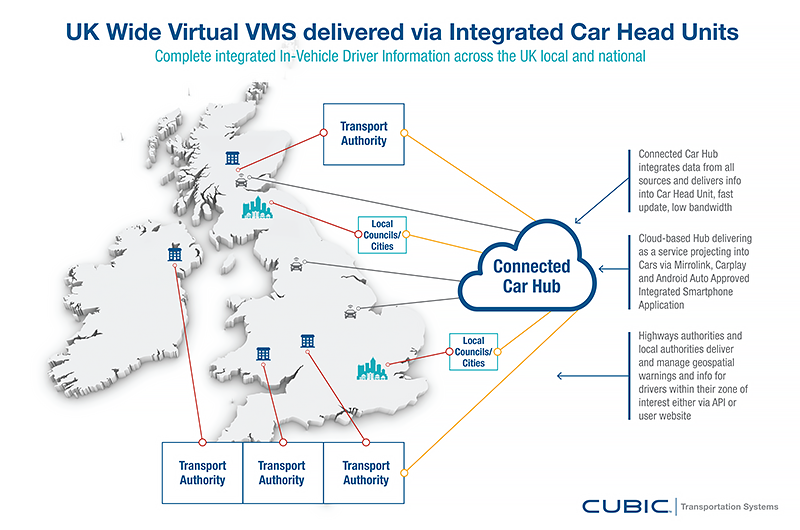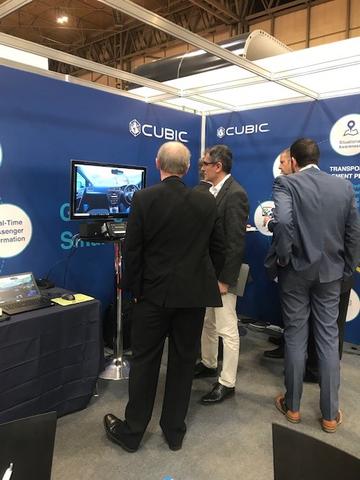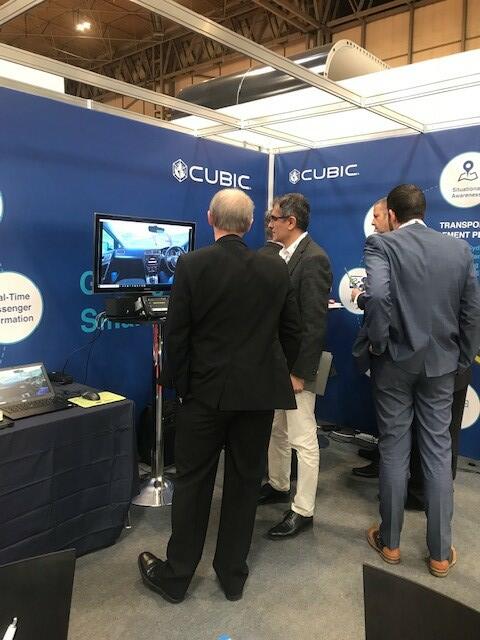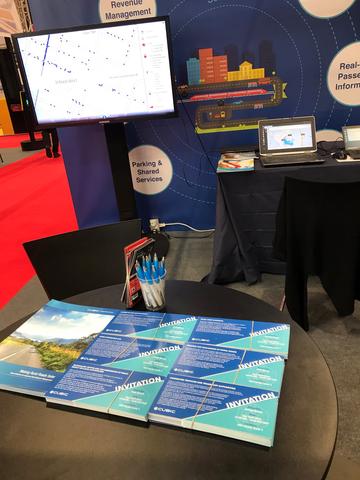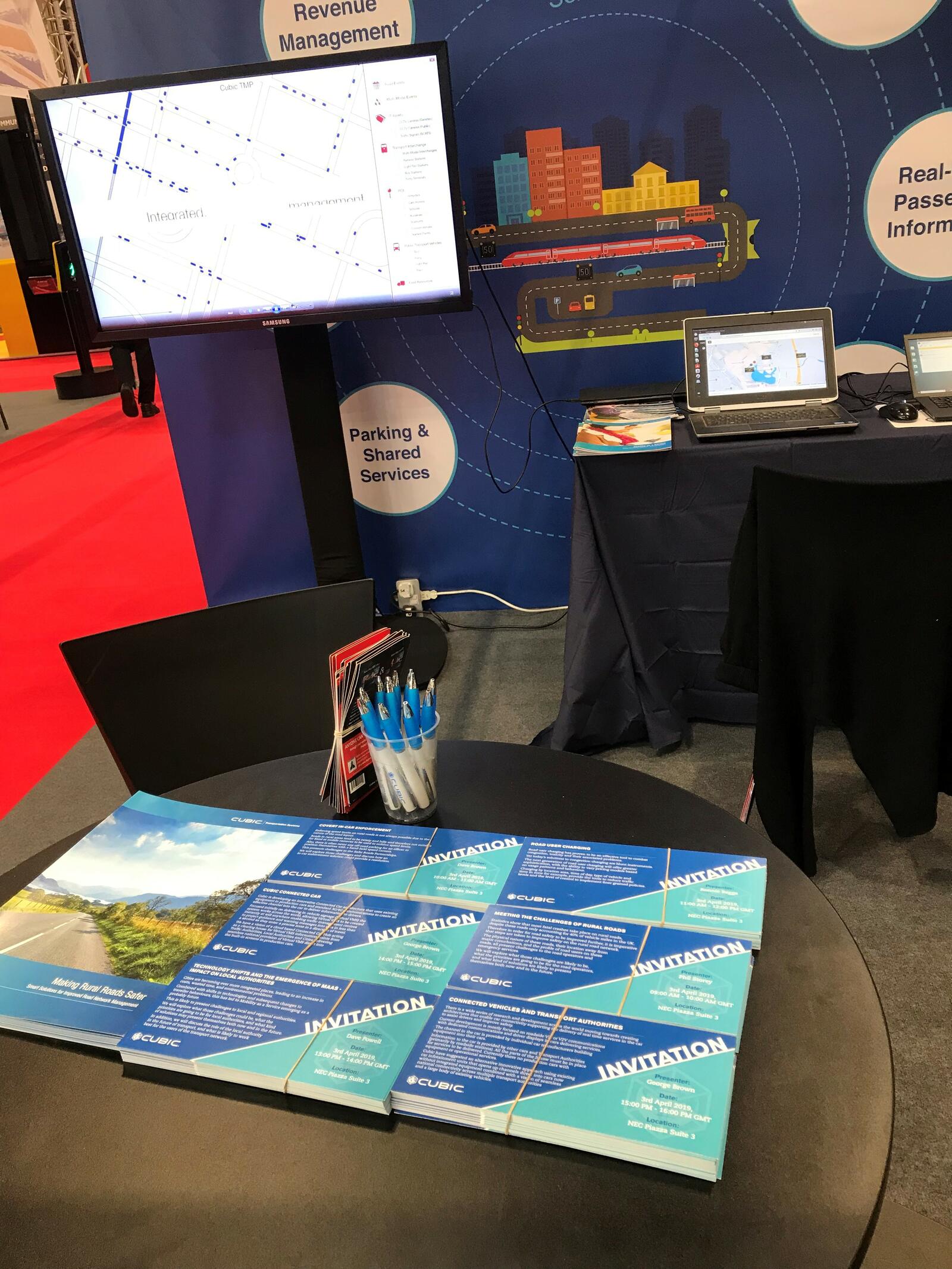Overview
Traffex 2019 is the UK's largest and most established event for all those involved in the highways sector. Thousands of traffic engineers, safety professionals and infrastructure planners are heading to Birmingham's NEC to explore the latest products, tech advances and services from some 350 leading exhibitors.
Integrated transport and traffic management are critical elements of the multimodal transportation networks of the future – providing individual operators the ability to more effectively manage and push out information to their travelers about their particular systems.
That’s why we’ve developed the Cubic Transport Management Platform, our cloud-based intelligent transportation system data integration management solution. The first of its kind, this solution is built on a flexible and scalable platform that allows for the continued operation of legacy systems while reducing costs of operation.
CTS is the market-leading, technology provider of integrated solutions that increase situational understanding and decrease urban congestion for transportation customers worldwide.
The Cubic Road User Charging back office solution is designed for multi-agency use while giving each entity control over its own business rules, revenue apportionment, and general ledger.
We are uniquely positioned between traditional tolling suppliers and large payment processors, and already manage $18 billion in revenues for the transportation industry.
For the last 27 years, we have been actively helping all UK police forces and councils enforce the compliance of statutory speed limits and traffic signals while also changing attitudes toward safer driving and improved driver skills. Our ultimate goal is greater respect for all road users – in all modes.
Cubic is developing an innovative Connected Car architecture that uses existing equipment in production cars and standard 3G/4G communications to create an effective channel into the car to deliver information to drivers.
Focused initially on delivering in-vehicle signage (Virtual VMS) the system works across the world, allowing Virtual VMS to be created instantly at will anywhere enabling traffic management centres to project guidance and warning messages into cars in less than a second as they enter a precise zone in a direction of travel.
We have a vision of a cloud based Connected Car Hub acting as a clearing house for Virtual VMS information points from Traffic Authorities, Local Authorities and Cities delivering seamless national provision of Virtual VMS direct into the built-in screens in production cars.
Read "Driving the Future of Connected Cars," published in "Thinking Highways."
Cubic Connected Car - Special Presentation
Join us as we present our innovative developments in the Connected Car architecture that uses existing equipment in production cars and standard 3G/4G communications to create an effective channel into the car to deliver information to drivers.
Presenter: George Brown
Location: NEC Piazza Suite 3
Day & Time: April 3, 2:00 p.m.
Statistics show that most fatal crashes take place on rural roads, despite these roads only accounting for 40% of vehicle miles in the UK. Therefore in order for road safety to be improved further, it is imperative that steps are taken to improve safety on the rural road network. The physical nature of these roads, their location away from major conurbations, and the profile of road users on these roads, all present challenges to the road operators and emergency services. We will explore what those challenges are likely to be, what the priorities are going to be for the road operators, and what kind of solutions are likely to present themselves both now and in the future.
Presenter: Phil Storey
Location: NEC Piazza Suite 3
Enforcing speed limits on rural roads is not always possible due to the nature of the road layout. Roads in rural areas tend to be twisty and hilly and therefore not suitable for fixed or mobile cameras to be used to enforce speed limits. Also, there is often never any off-road parking for an officer to position themselves with a hand-held speed camera. This presents challenges to the Safer Roads Partnerships. We will explore those challenges and discuss how an in-car enforcement solution could provide a resolution.
Presenter: Dave Brown
Location: NEC Piazza Suite 3
Road user charging has proven to be an effective tool to combat congestion, toxicity and their associated problems. Yet today’s solutions to congestion charging are blunt instruments. The next generation of road user charging will offer greater sophistication, with the ability to vary pricing models based on usage patterns and behaviour. Charging by location area, time of day, type of vehicle and time in zone for example, provide the tools to reduce traffic levels and the level of control to implement finer grained policies.
Presenter: Ronnie Beggs
Location: NEC Piazza Suite 3
Cities are becoming ever more congested places, leading to an increase in costs, wasted time, and environmental problems. Combined with shifts in technologies and subsequent changes to traveller behaviours, this has led to Mobility as a Service emerging as a probably future. This is likely to present challenges to local and regional authorities. We will explore what those challenges could be, what the priorities are going to be for local authorities, and what kind of solutions may present themselves both now and in the future. In addition, we will discuss the role of the local authority in the future of transport, and what is likely to work best for the users of the transport network.
Presenter: Dave Powell
Location: NEC Piazza Suite 3
Cubic is developing an innovative Connected Car architecture that uses existing equipment in production cars and standard 3G/4G communications to create an effective channel into the car to deliver information to drivers.
Focused initially on delivering in-vehicle signage (Virtual VMS) the system works across the world, allowing Virtual VMS to be created instantly at will anywhere enabling traffic management centres to project guidance and warning messages into cars in less than a second as they enter a precise zone in a direction of travel.
We have a vision of a cloud based Connected Car Hub acting as a clearing house for Virtual VMS information points from Traffic Authorities, Local Authorities and Cities delivering seamless national provision of Virtual VMS direct into the built-in screens in production cars.
Read "Driving the Future of Connected Cars," published in "Thinking Highways."
In this session George Brown from Cubic Transportation systems will:
- Deliver a presentation describing our work with connected cars and the system we are developing and trialling
- Demonstrate the system including operation with built in car infotainment units and the dynamic creation and setting of Virtual VMS
- Show videos of the system in live operation
- Take any questions on the system
Presenter: George Brown
Location: NEC Piazza Suite 3
There is a wide series of research and development across the world moving towards creating architectures that enable car connectivity supporting the delivery of real time services in the car to assist drivers and improve safety.
Current development is mostly focused on roadside V2I or V2V communications with dedicated communications and driver displays in cars delivering services. The channel in the car is provided by individual car manufacturers building equipment into their cars. Information to the car is provided by other cars and Transport Authorities (primarily by roadside stations). All the parts of the Jigsaw must be in place for services to be delivered. Currently there no production cars with equipment or operational services. Cubic have suggested an alternative innovative approach using existing car infotainment units that opens up channels direct into cars now without integrated equipment combined with a vision of seamless national connectivity across multiple transport authorities and a large body of existing vehicles.
Presenter: George Brown
Location: NEC Piazza Suite 3
Statistics show that most fatal crashes take place on rural roads, despite these roads only accounting for 40% of vehicle miles in the UK. Therefore in order for road safety to be improved further, it is imperative that steps are taken to improve safety on the rural road network.
Topics for today's discussion include:
- An overview of the problems and challenges associated with roads in rural environments.
- Some suggested technological solutions to improve safety on rural roads.
- Potential outcomes from applying new technology in the rural environment.
Presenter: Phil Storey
Location: Trading Floor Theatre


